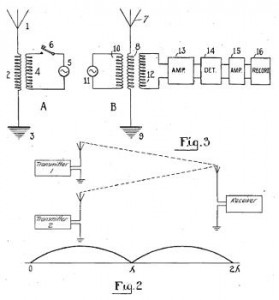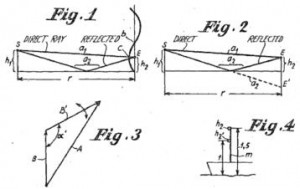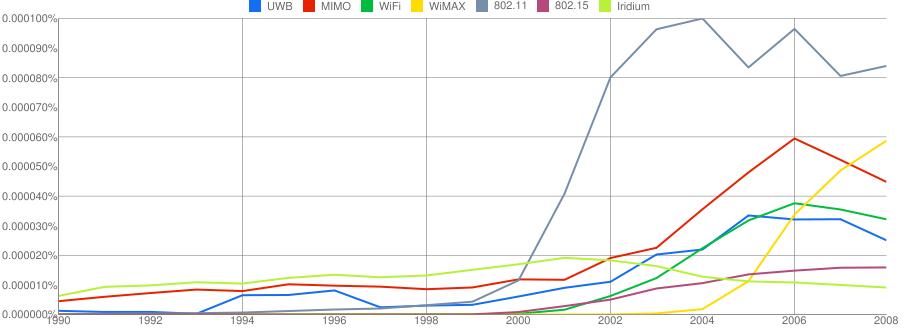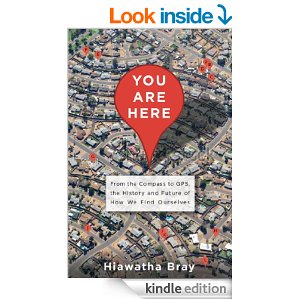
Conventional RTLS typically relies on one of three general approaches:
- Direction Finding (DF): originated by John Stone Stone in 1902,
- Amplitude Ranging: originated by Lee de Forest in 1904, and
- Time of Flight (Time Difference of Arrival (TDOA), or Transponder Ranging are typical approaches): orignating in the 1920’s and 1930’s.
As DF came of age after the First World War, inventors sought techniques other than DF and Amplitude Ranging to implement RF-based location systems. Inventors began to develop Time-of-Flight based systems. But they also explored a wide variety of other less conventional approaches. This post will review four novel approaches to RF-based location all invented in the 1920’s and 1930’s:
- Synchronous Ranging: an early attempt at a ToF-based system,
- Differential Attenuation: a comparison between two different frequency signals with differing rates of attenuation to determine range,
- Multipath Interference Ranging: seeking an interference between a direct and reflected ray for maritime collision avoidance, and
- Transponder Ranging: a more sophisticated ToF-based system.

Richard Howland Ranger (1889-1962) of RCA proposed a ranging system requiring synchronized oscillators between a transmitter and a distant receiver. [1] Ranger’s system involved counting the beats between the synchronized oscillators to determine how many half-wavelengths the distance has changed from some starting point. The degree of precision necessary to make this system work remains as unachievable today as it was then. The Figure above shows Ranger’s concept.
In ground wave propagation, higher frequency signals tend to attenuate more quickly with distance than lower frequency signals. Edward Gage proposed an RF ranging system based on the physics of this differential attenuation in 1930. [2], [3] This interesting approach to the problem of RF-based location does not appear to have achieved any widespread success, however.
German engineer Wilhelm Runge (1895-1987) invented a marine ranging system that used interference between direct and reflected signals to indicate distance as a navigational aid. [4] The Figure shows Runge’s invention. Runge went on to play a key role in the development of German radar during World War II.
Time-of-flight or transponder ranging traces its origin back to the radio range finder invented by Alexander McLean Nicolson (1880-1950) in 1930. [5] Nicholson invented the concept of transmitting a signal from a first point, receiving and reradiating it from a second point. By measuring the time-of-flight, one may infer the range. Nicolson’s system operated “on the principle that for every unit of length, there is a frequency which when reflected will have a phase shift equal to 180° or 360°. That is, by tuning the oscillator and broadcasting a certain frequency to a reflecting station, the return wave and the initiated wave will exactly neutralize or will double in value (if the original and return amplitudes are equal) at two definite distances.” The Figure below shows his scheme.
[1] Richard Howland Ranger, Method for radio position finding, US Patent 1,639,667, August 23, 1927.
[2] Edward G. Gage, Radiant energy distance determining system and apparatus, US Patent 1,961,757, June 5, 1934.
[3] Edward G. Gage, Radiant energy distance determining system and apparatus, US Patent 1,828,531, October 20, 1931.
[4] Wilhelm Runge, Distance determining system, US Patent 2,134,535, October 25, 1938.
[5] Alexander McLean Nicolson, Radio range finder, US Patent 1,945,952, February 6, 1934.





